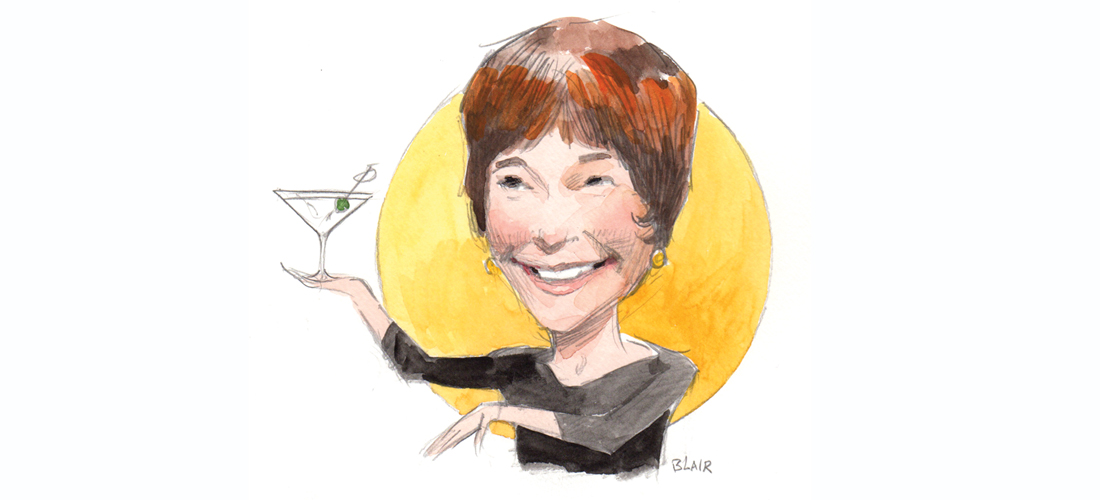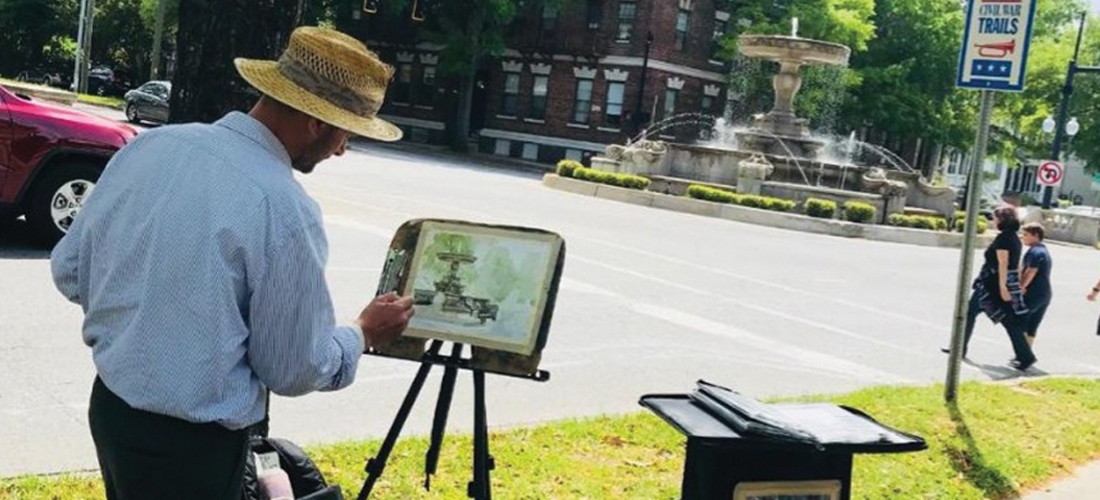Matters of Taste
Sommelier Shawn Underwood comes clean
Shawn Underwood
Job: Sommelier and wholesale wine distributor for Country Vintner
First moved to Wilmington: 1989. “I’ve seen
a lot of changes.”
Favorite spot: Caprice Bistro. “You can be really formal downstairs or really casual upstairs, but either way their food is fantastic. It’s classic French cuisine.”
By Dana Sachs
What got you hooked on wine?
I went to Cambridge University for a semester when I was in college and went to Paris for the first time. I tasted Chablis and just fell in love with it.
Had you had wine before that?
Yeah, but I’d had junk. I’d had Liebfraumilch and Blue Nun. Riesling. And variations on different alcohols.
And what was so great about Chablis?
[It] struck me as very refined and elegant, whereas those other wines were just sweet, sugary syrup. Chablis is this beautiful, acidic, mineral-driven wine that’s centuries old.
It sounds like wine opened up a world to you.
It was a number of things. It was a cultural experience, because I was drinking it in the park by the Eiffel Tower, eating a fresh baguette and a piece of cheese and it was just the whole culture of France, and really of Europe in general, where wine is food. It’s part of their everyday culture. It’s not just something they drink to get intoxicated. It’s a part of their daily experience. It’s a cornerstone of that culture. That’s what I fell in love with.
College students can often see alcohol as a means to an end.
Not to say I didn’t drink more than my share! But it was the cultural aspect that really appealed to me and that still appeals to me.
Do you believe that we can understand a culture better through its wine?
Absolutely. And, again, it’s not just the wine. It’s the food. It’s the way that [people] embrace it. When you’re in Spain, they have restaurants that are specifically built around wine. The tapas bars. Here, we go out to bars and we drink. [In Spain], there’s always food. They’re drinking and they’re eating some great local dish. When you’re in coastal Spain, in Rias Baixas and you’re drinking Albariño and you’re eating seafood that came out of the ocean literally within a mile of the vineyards, those things are really made for each other. And that’s what that whole culture in that little region is based around.
I’ve also heard you say that we can understand history through wine.
Wine is the culmination of empire, really. It started out in what was the Soviet Union. It moved from there into Eastern Europe and the Middle East. And then the ancient Greeks carried it into the Mediterranean Crescent — Italy, Southern France, Coastal Spain, and Portugal. And then, the Romans. Part of their soldier’s pay was in wine, so everywhere they set up a fortress — which was, of course, all over Europe — they planted vineyards.
So, the soldiers could drink all the wine they wanted?
Yeah. It was good for relaxation. It was good for giving them courage for battle. It served a lot of purposes. But [the history of wine is] really the history of empire and expansion. The Spanish brought wine to South America and Southern California. The Dutch took it to South Africa. [Traders] went to the East Indies for spices and various goods and [they] took wine with them and planted vineyards.
I was surprised to learn about wine from Lebanon.
We don’t think of the Middle East, and especially Islamic countries [as being wine producers], because they don’t drink alcohol, but they do make it and sell it as part of their commerce. Most of this was the result of conquest of lands occupied by non-Muslims, who were already producing and consuming wine.
Do you think there’s a physical difference in people’s ability to taste subtleties in wine? Are some people just more sensitive?
There are a couple of factors. It’s true that some people have more acute senses. But part of it is also repetition. When you’ve tasted 10,000 wines you can start to break down characteristics. But it’s also your experience with food, with flowers, with herbs, with all these things that inform your palate. If you’ve never had a currant, you’re not going to use that as a descriptor. If you don’t know what violets smell like, you’re not going to use that as a descriptor. But the more experience you have with botanicals, with herbs, with different foods, the more your palate’s going to be informed to pull those characteristics out of wine.
So discernment might come from someone’s interest in learning.
Absolutely.
Here’s a recent review of a wine in Wine Spectator: “A spicy style, offering vanilla, clove and nutmeg flavors embedded in a creamy texture. Peach and apple notes chime in. Moderately long.” What does that tell you?
Well, it tells me that there’s oak. Vanilla and baking spices are markers that indicate French oak was used in the winemaking process. So, without even tasting the wine, you know it spent time in a barrel.
An oak cask?
Yes. And the creaminess has to do with the texture, the way it feels in your mouth. And the length of the finish is how long that flavor lingers in your mouth after you’ve sipped it. [When] you taste some wines, you get a flavor and then it goes away. An inexpensive pinot grigio might just disappear. But that big California chardonnay that spent 12 months in an oak barrel and has a lot of malolactic fermentation — a natural process that converts harsher malic acid to softer lactic acid — it’s going to stay with you for a long time.
And that’s a good thing?
It depends. That’s the thing about wine. It’s incredibly subjective. I could taste a wine and say, “It’s the best thing,” and someone else could say, “I don’t really like it.”
It seems like some wines become trendy.
Grapes do trend. Merlot was a phase for a while and then [the movie] Sideways kind of ruined that. Pinot noir became a phase. And then malbec became a phase. Right now, definitely, a lot of rosé.
Are some wines overrated?
There are wines that people buy based on the name. Dom Perignon champagne. People will buy that and they are buying the name. If someone poured me a glass of Dom Perignon, I wouldn’t pour it out. But I don’t think it’s the best champagne out there, and I don’t think it’s worth $200.
So, what principles do you recommend that people follow when they’re buying wine?
First of all, go to a small, independent retailer. Don’t go to a big box store. Don’t go to a grocery store. Everyone in this town who has a wine shop tastes those wines. They understand the wines. They know the regions. They’re going to help you find the right wine. You don’t have to be an expert. You just have to be able to answer a couple of questions that might help them discover what kind of wine you like. That’s their job — to help you find the right wine.
What kind of wine town is Wilmington?
Wilmington has a very enthusiastic consumer base. They don’t call it New Hangover County for nothing.
What goes well with turkey?
Cru Beaujolais. That’s going to be a beautiful, elegant wine, start to finish. b
Dana Sachs’ latest novel, The Secret of the Nightingale Palace, is available at bookstores, online and throughout Wilmington.


